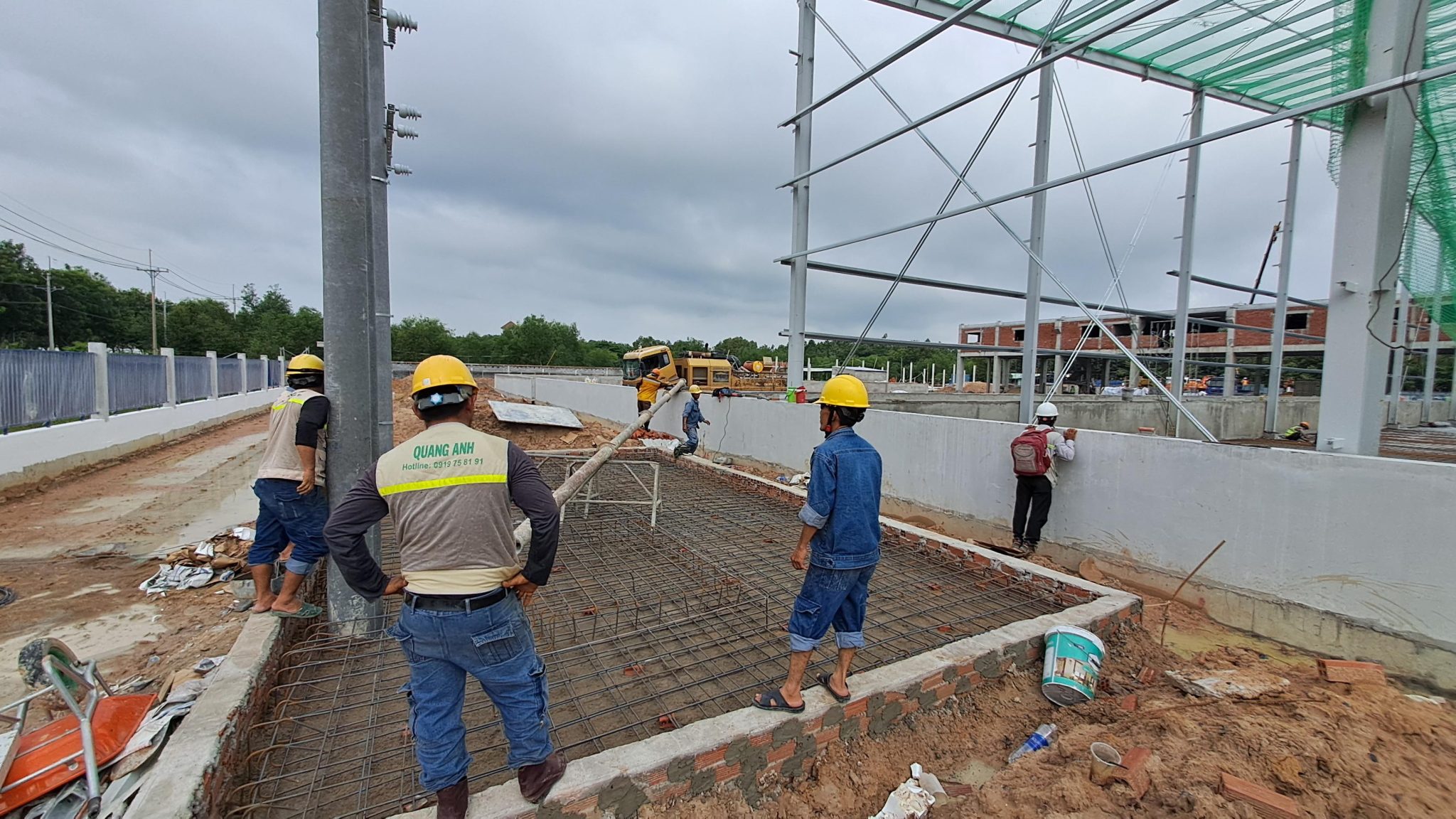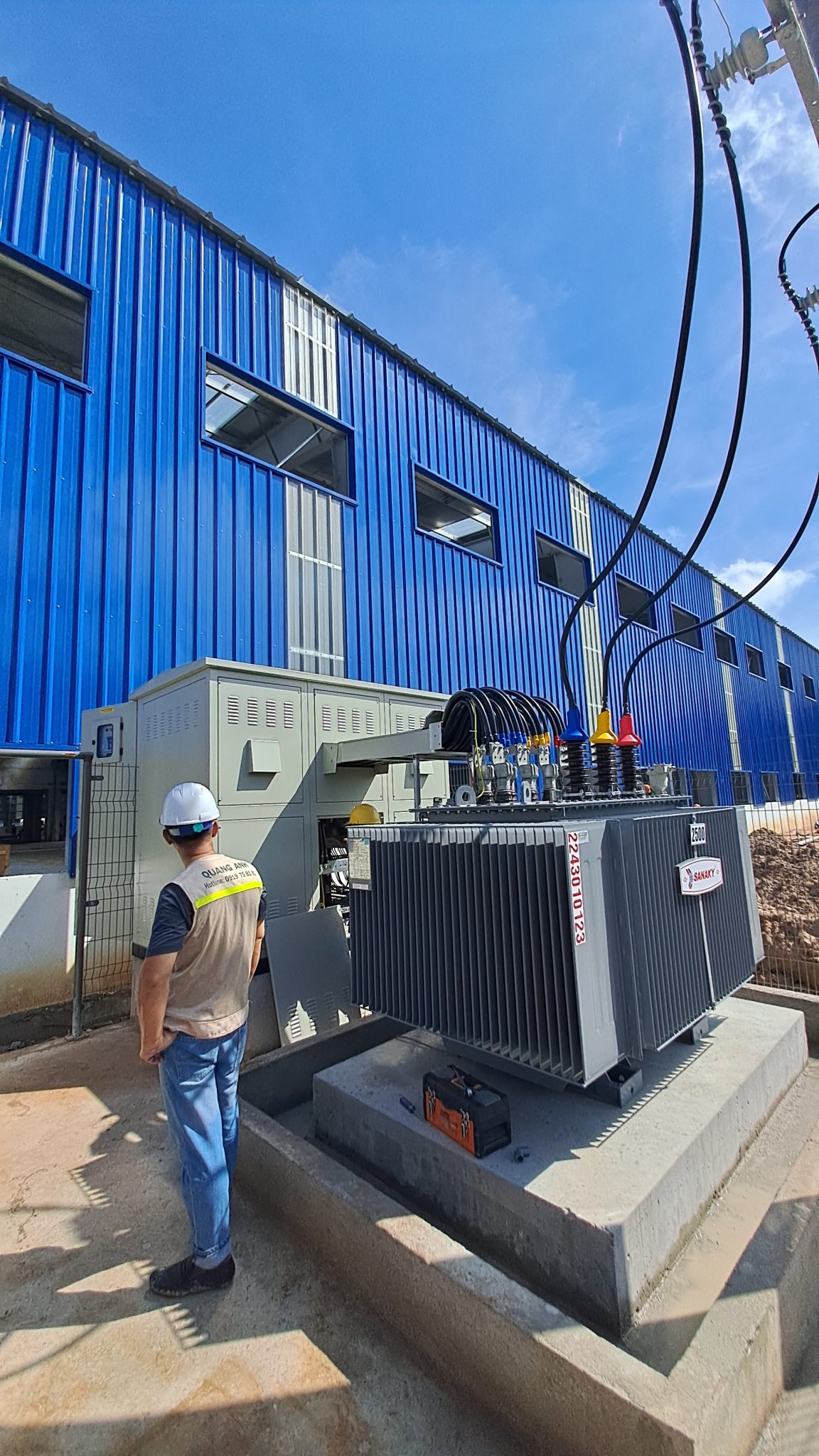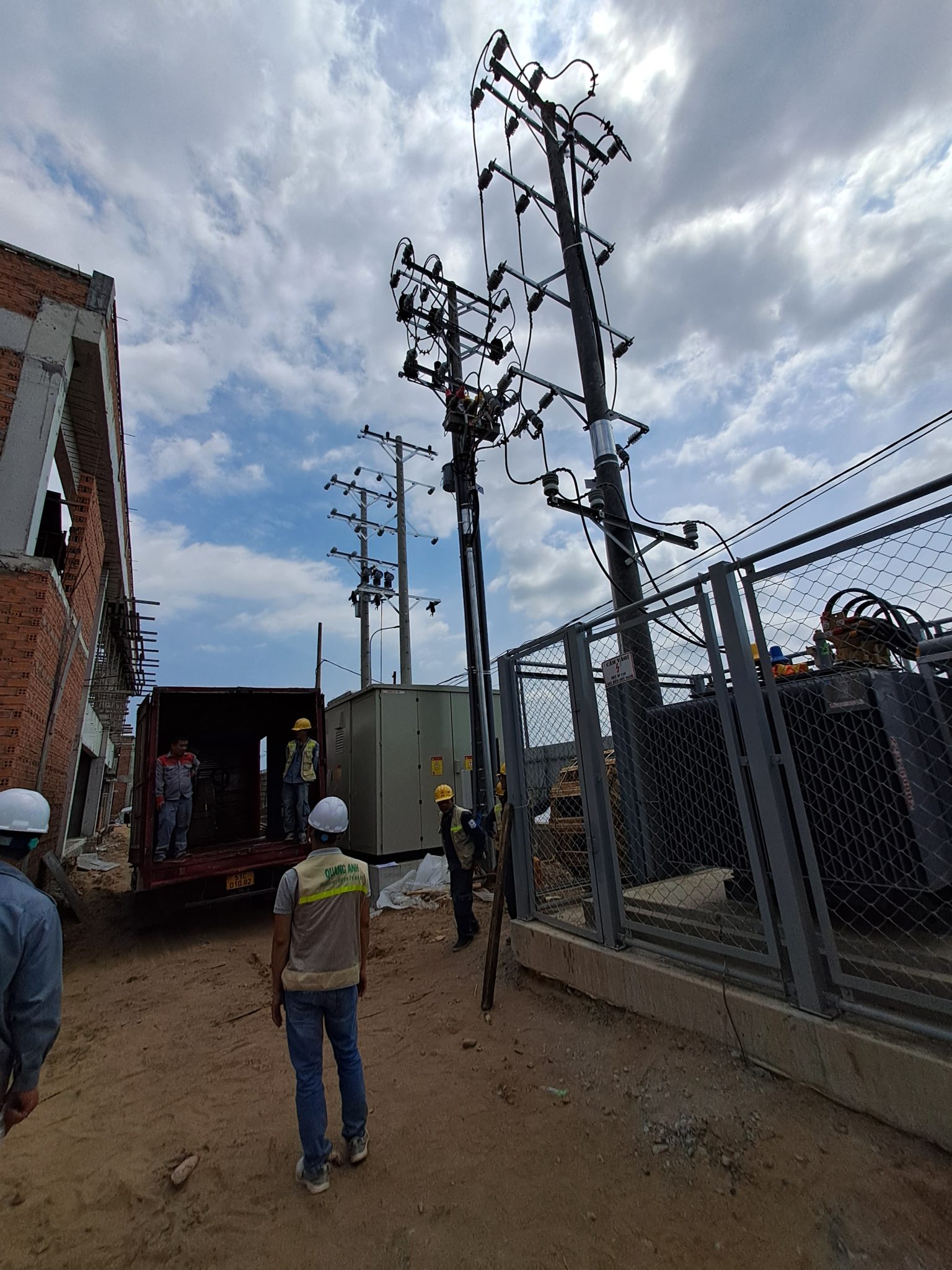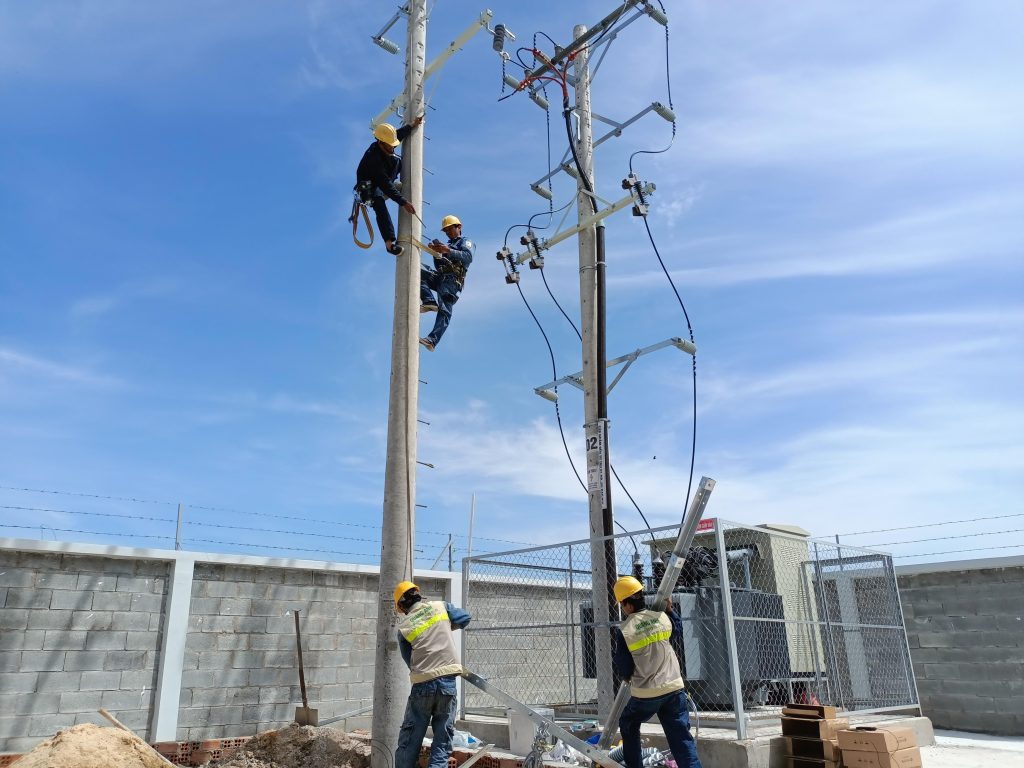News
Construction of Transformer Stations: Procedure and Technical Requirements
The construction of transformer stations is a complex process, requiring thorough preparation and strict adherence to procedures, with compliance to safety regulations.
Detailed Process of Transformer Station Construction
The construction of transformer stations begins with the survey and design phase to determine the optimal location for installation, ensuring no impact on the surrounding environment. Once a complete transformer station design is obtained, site preparation is carried out, including marking and foundation excavation. The next phase is basic installation, including concrete foundation casting, grounding systems, and other necessary equipment. Finally, the system is installed, set up, connected, and safety checked before operation.
The transformer station construction process involves important steps to ensure safety and efficiency during operation. Achieving this requires implementing the process through specific phases as follows:
A. Pre-Construction Preparation
- Developing a Construction Plan: The first step is to create a detailed plan based on technical documents, including design and detailed drawings. This helps to clearly identify the schedule and requirements for manpower and necessary materials.
- Field Survey: Field evaluation is an important step to determine the optimal location for the transformer station and underground cable system, ensuring long-term efficiency.
- Material and Equipment Preparation: Preparation work includes importing materials and checking their quality according to established technical standards.
B. Construction
- Excavating Foundation and Installing Grounding System: Foundation identification and excavation are carried out, followed by concrete foundation casting and grounding system installation to ensure the station’s stability.
- Erecting Station Structure Columns: After positioning and marking, this process includes foundation casting for columns and erecting station structure columns to support the framework.
- Installing Underground Cables: Underground cable installation requires precision from trench digging, sand covering, to cable laying, always protecting the cable with bricks for safety.
- Installing Switches, Operating Chairs, Supports, and Insulators: Ensuring the accurate and safe installation of the station’s critical components.
C. Installing Transformer Stations
- Transporting and Placing Transformer: The process of moving the transformer to the location must be done carefully to avoid damage.
- Installing Accessories and Connecting Cables: The transformer is mounted on steel frames, while accessories and electrical cable connections are carefully executed.
- Ensuring Checks: After installation, everything needs to be ensured to be accurate and the system to operate safely.
D. Completion and Acceptance
- Testing and Calibration: Conducting tests to ensure the transformer station system operates according to technical requirements.
- Internal Acceptance: Comprehensive internal system checks are carried out before officially commissioning.
- Power Acceptance: Complete and execute the necessary procedures for energization.
- Trial Operation and Handover: The system undergoes a trial operation to test smoothness before handing over to the user unit.
To execute the construction of transformer stations effectively and safely, adherence to current technical and safety standards is crucial, with continuous supervision by technical experts throughout the process.

Technical and Safety Requirements in Transformer Station Construction
Technical requirements for transformer station construction require full approval and agreement with the regional electricity provider. This ensures all transformer station construction processes conform to technical and electrical safety standards. Electrical safety is a crucial aspect; all equipment used must meet strict safety standards. Furthermore, activities must be continuously monitored to ensure safety for both workers and the project.
Transformer station construction is a complex process requiring strict compliance with technical and safety standards, from preparation and installation to acceptance.
1. Technical Preparation Work
First, a detailed study of technical documentation is critically important. Detailed drawings and explanations from the investor need thorough review to develop suitable construction plans and schedules. Following this, budgeting and material supervision processes must be carefully conducted. All equipment and materials imported must be inspected to ensure they meet technical standards before installation.
2. Creating Drawings and Construction Plans
Creating detailed drawings and construction plans is a necessary step to reasonably allocate tasks among items such as column foundations, equipment installation, underground cables, etc. Agreement with the project management on means, storage, and construction schedules is an important requirement to ensure the synchronization of technical processes and avoid impacting surrounding activities.
3. Basic Construction Sequence
Transformer station construction involves basic steps like thorough site surveys; getting benchmark positions for column and underground cable routes as per design is essential. Construction activities require reports and consensus with the investor. Subsequent steps like station foundation excavation, grounding system installation, and concrete foundation casting all demand strict adherence to technical standards. Installing and connecting medium and low voltage cables require close supervision to ensure insulation and accurate circuit continuity before acceptance.
4. Technical Requirements Throughout the Construction Process
Supervision during construction is crucial to track progress and ensure accuracy in equipment installation. Measurements using level meters or balancing water tubes help ensure accuracy. Requirements for the distance, clearance of components must meet technical standards through continuous inspection.
Safety Requirements in Transformer Station Construction
Alongside technical caution, occupational and electrical safety also play important roles. Transformer station construction requires setting up shielding walls and isolated areas to ensure safety for the site and workers. Strict regulations on disconnecting the power source before working on parts with high electric shock risk are mandatory. Additionally, grounding systems and electrical hazard warning signs must be installed at appropriate locations to warn about electrical risks.
Installing equipment like transformers not only requires accuracy but also protection to prevent damage, ensuring the equipment operates durably and stably. The final acceptance and inspection process must be conducted thoroughly to ensure the safety and efficacy of the project.

Execution Time and Handover of Transformer Stations
The execution time for transformer station construction procedures can range from a few weeks to several months. This depends on the project’s complexity and the efficiency of the stakeholders in handling approval processes. Once the construction is complete, the power supply time typically takes only a few days, thanks to an optimal acceptance process that ensures the system operates stably and safely.
Construction Process of transformer stations involves a series of complex stages, requiring coordinated cooperation among multiple parties. Initially, field surveys to position foundation and cable routes are important to ensure placement aligns with the approved design. Next, the station foundation construction phase, including concrete foundation casting and installation of electrical devices like switches, supports, and insulators, is completed. Once the transformer and medium-voltage cables are installed, a thorough station acceptance is conducted to ensure quality and operational efficiency.
Regarding execution time, resolving procedures for power supply and network connection begins with an energy access procedure from EVN, lasting about 10 days. Agreements on column, station locations typically take no more than 5 days for overhead medium-voltage and 10 days for underground low-voltage lines. Additionally, the construction permit issuance can take 7 to 10 days.
Actual construction lasts about 12 months for standard projects. This process can be interrupted by factors such as weather, site conditions, or changes in construction procedures. The adoption of advanced technology and cooperation with professional construction units significantly contribute to optimizing implementation time.
The entire investment cycle for transformer stations, from feasibility studies to trial operations, can take up to 36 months. The specific duration depends on phases such as feasibility studies and field surveys (6-14 months), project approvals (9-12 months), and preliminary design (6 months). Coordination with local authorities and state management agencies plays a crucial role in avoiding schedule delays.
Factors influencing project time include legal procedure challenges like obtaining construction permits and electrical connection agreements. Complex site conditions and technical requirements are also significant challenges to actual implementation time. Using new technologies like automation and smart monitoring not only enhances operational efficiency but also helps reduce maintenance time; however, initial investment must be considered.
Overall, the construction process of transformer stations not only demands strict adherence to technical standards but also requires advanced technology solutions and effective cooperation among the parties involved to ensure project success on schedule.

The construction of transformer stations brings long-term benefits in terms of technical and investment aspects, ensuring a stable and safe power supply for industrial and residential projects.
Contact QuangAnhcons for detailed consultation on transformer station construction via Hotline: +84 9 1975 8191.
QuangAnhcons provides transformer station construction services with a team of experienced engineers, ensuring the highest standards of quality and safety for the project.

 Tiếng Việt
Tiếng Việt 简体中文
简体中文 Deutsch
Deutsch 日本語
日本語 한국어
한국어 ไทย
ไทย Русский
Русский Français
Français
